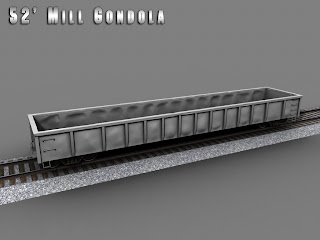Today I wanted to share a little bit about one of
the more interesting jobs I worked with the railroad. During the later portion
of my time with them I was desperate to find some kind of reasonably sane
schedule. I was tired of being on the road and tired of being tired all the
time. Right after January 1st, I made a seniority move to the brakeman position
on the yard job at a large paper mill located at Coosa Pines, Alabama.
The interesting thing about this job was the fact that it
was shared between two competing railroads, CSX and NS. Now it gets a little
more complicated than that. Coosa Pines is located on the outskirts of
Childersburg, Alabama and Childersburg is located on the junction between the
Southern (Anniston, Al to Calera, Al) and Central of Georgia (Columbus, Ga to
Leeds, Al). A branch extended south, from the Seaboard Coastline (Manchester to
Birmingham), to the plant as well. With all that being said, the yard job was
actually a joint venture between three different railroads. The yard job
consisted of three different crews that manned Y101. They included a day shift,
a night shift and a relief job that covered the off days for the day and night
shifts. Day and night shifts received 2 days off a week and the relief job had
three. So my seniority took me to the night shift, manned by the former SCL
crew out of Manchester, Ga. The day shift during that three month period was
covered by the former Southern crew and finally the former Central of Georgia
crew filled the relief job.

Power for the yard job was also shared between the NS and
CSX which was quite interesting. The NS always provided a GP38-2 and CSX always
provided a B30-7. On one occasion I remember CSX sending us a B36-7 which we
quickly bad ordered and had sent back to Boyles due to the fact that B36s were
horrible at low speed switching. Our particular engineer also preferred to run
from the NS unit due to the EMD's throttle response and the fact that it was
just a cleaner cab.
Now for years this paper mill was your typical paper plant
in that it received loads of pulpwood and wood chips in droves. By the time I
worked the job, the plant had been switched over to a completely recycled plant,
only receiving a few truckloads of wood chips here and there. Even though it
was recycled paper the typical stench still remained.
This will conclude the first part of the series. In the next
few articles I will run through the general track layout and a typical night switching the plant for
those that might be interested i n recreating a paper mill job.























